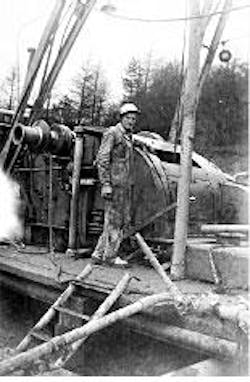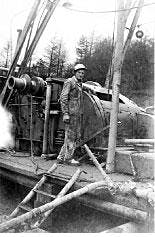Unlikely heroes in war-torn England
Winston Churchill called it "the best kept secret of the war." In 1943, 42 American roughnecks departed the U.S. for an unlikely destination, the Eakring oil field in Robin Hood's Sherwood Forest, Nottinghamshire, England (OGJ, June 24, 1991, p. 30). What came of this mission showed how oil men from opposite sides of the Atlantic can work together, even under the worst of conditions.
"The (German) 'Wolf Pack' was sinking oil tankers right and left, threatening the lifeblood of Britain's air defense," said 83-year old American driller Lewis Dugger (see photo). Undeterred by this difficult situation, however, British company man C.A.P. Southwell, who worked for D'Arcy Exploration Co., asked Oklahoma-based Noble Drilling Co. and Fain Porter Drilling Co. for help.
Oilfield warriors
Southwell's original plan called for 10 rigs to drill 100 wells in 1 year, Dugger recalled, yet "Lloyd Noble and Ed Holt felt we only needed 4 rigs to do the job." Proving the prediction correct, the American crews went on to drill 106 wells in 10 months, raising production to 3,000 b/d from 300 b/d.
"We rigged up the first gin poles (self-loading trucks) England ever saw," he said, "and with our jack-knife masts, we could move on, (reach) TD, and move off a well in 7 days." In comparison, the English, using large drilling rigs designed for the Middle East, "took the better part of 3 weeks to move."
Dugger fondly remembers driller J.W. Nickle reporting "an unbelievable" 1,010 ft of hole in 12 hr-on the first well. "I say, old man, your drilling report just can't be true," the British manager responded. Nickles, angry at being questioned, retorted in the American vernacular, "Damn it to hell, if you don't believe me, you come out and measure it yourself."
Yet the Americans also received help from unusual sources. "On one occasion, a crater made by an exploding bomb was used as a mud pit, saving the Americans considerable time and effort," reported the Chicago Tribune in 1944 in a rare article on the project.
To commemorate this war-time effort, the International Society of the Energy Advocates, with support from British diplomatic leaders, intend to build a statue of the "Oilfield Warrior" in Tulsa-a duplicate of the monument erected in 1991 in Nottinghamshire.
Dean E. Gaddy
Drilling Editor

